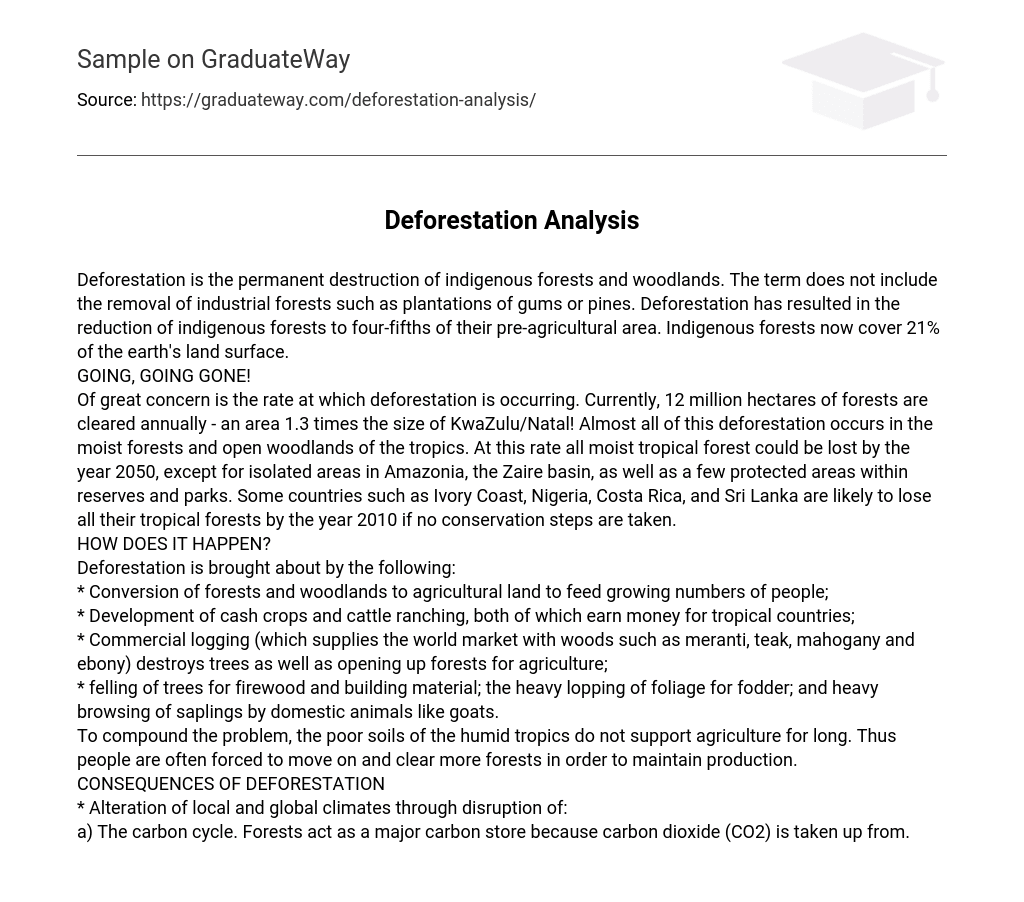Deforestation is the permanent destruction of indigenous forests and woodlands. The term does not include the removal of industrial forests such as plantations of gums or pines. Deforestation has resulted in the reduction of indigenous forests to four-fifths of their pre-agricultural area. Indigenous forests now cover 21% of the earth’s land surface.
Of great concern is the rate at which deforestation is occurring. Currently, 12 million hectares of forests are cleared annually – an area 1.3 times the size of KwaZulu/Natal! Almost all of this deforestation occurs in the moist forests and open woodlands of the tropics. At this rate all moist tropical forest could be lost by the year 2050, except for isolated areas in Amazonia, the Zaire basin, as well as a few protected areas within reserves and parks. Some countries such as Ivory Coast, Nigeria, Costa Rica, and Sri Lanka are likely to lose all their tropical forests by the year 2010 if no conservation steps are taken.
Deforestation is brought about by the following:
- Conversion of forests and woodlands to agricultural land to feed growing numbers of people;
- Development of cash crops and cattle ranching, both of which earn money for tropical countries;
- Commercial logging (which supplies the world market with woods such as meranti, teak, mahogany and ebony) destroys trees as well as opening up forests for agriculture;
- felling of trees for firewood and building material; the heavy lopping of foliage for fodder; and heavy browsing of saplings by domestic animals like goats.
To compound the problem, the poor soils of the humid tropics do not support agriculture for long. Thus people are often forced to move on and clear more forests in order to maintain production.





